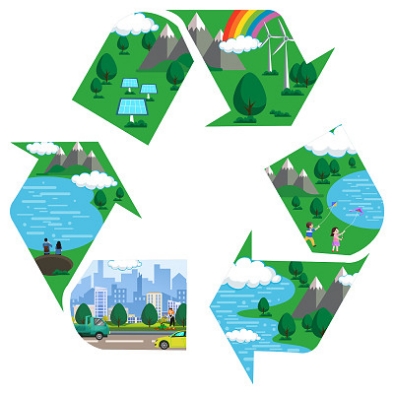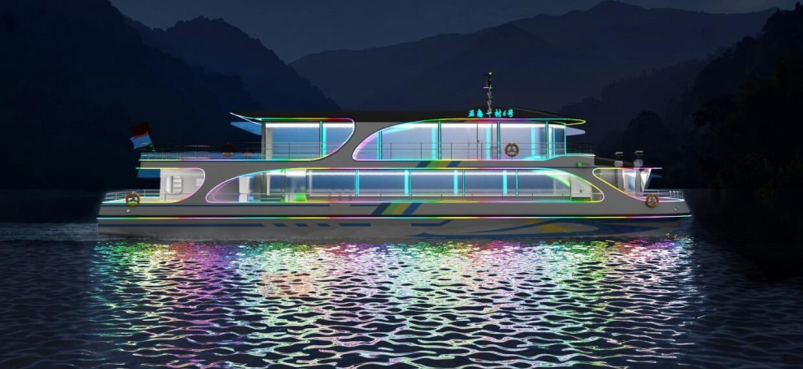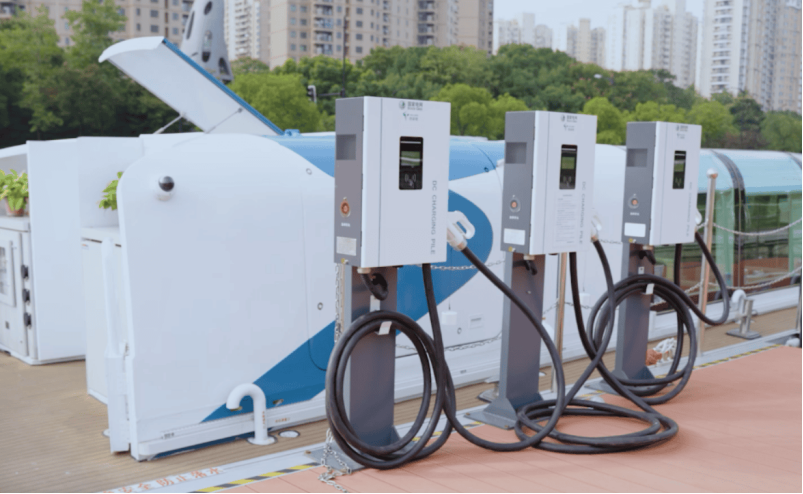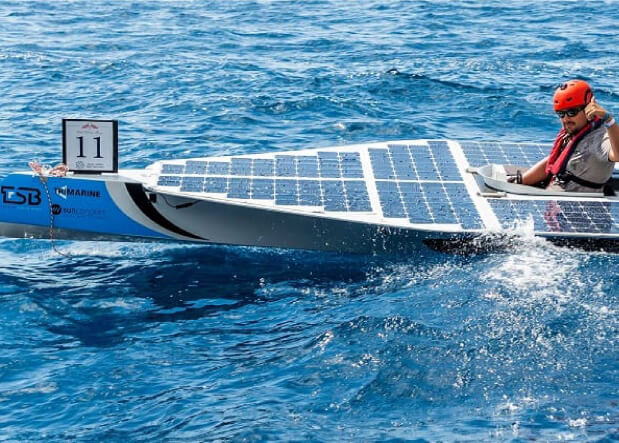|
|||||||||||||||||||||||
|
|||||||||||||||||||||||
 66
66
 2024-04-02
2024-04-02
Moreover, we anticipate that under the dual influence of policy guidance and market dynamics, the upfront costs of electric boat retrofit kits will gradually decline with mass production and technological advancement, encouraging more boat owners and operators to embrace this green technology. Enhanced through continued R&D and industrial standard-setting, the quality, performance, and compatibility of electric boat retrofit kits will significantly improve, broadening their applicability across various waterways and vessel types.


Green Voyages Unfold: An In-depth Look at Electric Boat Retrofit Kits and Their Real-world Applications
As global environmental consciousness continuously rises, all sectors are actively seeking pathways towards sustainable development, and the waterborne transportation industry is no exception. Traditional fossil-fueled vessels inevitably produce substantial carbon emissions and noise pollution during operation, which starkly contrasts with the contemporary pursuit of environmental friendliness and low-carbon living. Against this backdrop, electric boats have emerged as a forward-thinking and environmentally valuable solution, gradually entering mainstream attention, with electric boat retrofit kits serving as pivotal instruments for existing vessels to transition towards green operations.
The concept of electric boat retrofit kits arises in response to the maritime industry's call for reduced emissions and eco-friendly practices. It refers to a suite of components and systems designed specifically to replace traditional fuel-based propulsion systems in non-electric boats. Such kits commonly encompass, among others, high-efficiency battery packs, electric motors, energy management systems, charging facilities, associated installation accessories, and control systems.
The advent of electric boat retrofit kits marks a substantive step forward in the marine industry's transition to new energy technologies. In practical applications, whether it be small leisure crafts, inland ferries, or medium-sized fishing and cargo vessels, they can undergo power system upgrades through the installation of electric retrofit kits. This innovation signifies the maritime sector's deep embrace and active promotion of new energy technologies.

In the preliminary stages of application, electric boat retrofit kits have already seen widespread use in various settings, including inland waterways, lakes, coastal sightseeing areas, etc. For example, some aging ferries have been retrofitted with electric systems, achieving zero-emission operations, thereby reducing pollution to water bodies and significantly lowering operating costs. Additionally, electric boats' low-noise characteristic renders them better suited for operation in conservation areas and natural reserves with stringent environmental requirements.
Key components of electric boat retrofit kits consist of:
1. Battery Packs: These serve as the primary power source for electric boats, utilizing advanced lithium-ion batteries or other forms of energy storage technology to supply ample energy for electric motors to propel the vessel. The capacity of the battery pack directly determines the electric boat's cruising range, while a Battery Management System (BMS) ensures optimal performance and extends the battery life by preventing overcharging or deep discharge.
2. Electric Propulsion System: Comprising electric motors and propellers, the electric motor efficiently converts received battery energy into mechanical force, driving the propeller rotation to generate thrust. Compared to fuel engines, electric motors boast higher energy conversion efficiency, faster response times, and lower maintenance costs.
3. Electronic Control System: Acting as the "brain" of the boat, this system monitors and controls the operation of all electrical systems, such as battery power management, distribution of electric motor power, and charging system control. It optimizes energy usage through precise algorithms, ensuring the best performance under various working conditions.
4. Charging Equipment: Electric boats can recharge at shore-based charging stations, with some retrofit kits possibly incorporating supplementary energy systems like solar panels or wind turbines to improve energy efficiency and extend cruising range.
5. Installation Accessories and Structural Modifications: Retrofit kits also entail adapting the original boat structure to accommodate new electric equipment, securing proper installation locations for the power system to integrate seamlessly with the vessel's structure, and implementing waterproofing and heat dissipation measures accordingly.
6. Monitoring and Communication Systems: Modern electric boat retrofit kits often incorporate digital monitoring platforms that display real-time battery status, navigation data, and fault warnings, facilitating crew operation and maintenance. Remote communication technology enables remote monitoring and management of the boat's status.
The main types and characteristics of electric boat retrofit kits largely depend on their intended purpose and boat type. The following sections analyze these kits in detail from the perspectives of power ratings, applicability, and technical features, and explore their advantages in terms of energy conservation, silent operation, and low maintenance costs.
1. Varying Power Ratings & Applicable Scopes
v Leisure Yacht Retrofit Kits: Designed for small to mid-size yachts, these kits usually have a lower power rating, focusing on cruising range and comfort. As they cater primarily to short trips and recreational activities, battery capacity and motor power are relatively modest, featuring quick charging and plug-and-play capabilities for easy recharging at marinas or through solar charging panels.
v Fishing Vessel Retrofit Kits: The electrification of fishing boats emphasizes stability and durability for extended periods of operation, as well as resistance to corrosion in nearshore working environments. The electric retrofit kits for these vessels typically feature strong anti-corrosive properties, with power ratings determined by boat size and operational requirements. The cruising range must be adequate to support day-long or multi-day fishing expeditions.
v Ferry and Passenger Ship Retrofit Kits: These electric kits have higher power ratings to meet the demands of frequent starts and stops and the carriage of many passengers. Given fixed routes and potential charging points along the journey, emphasis is placed on optimizing charging efficiency and cruising range, coupled with sufficient safety margins.
v Cargo Ship Retrofit Kits: For cargo vessels, electric kits must provide high power outputs and large-scale energy storage to cope with long-distance transport and heavy loads. Such kits often adopt modular designs, enabling the addition or subtraction of battery packs as needed to facilitate flexible expansion.
2. Technical Feature Comparisons
Ø Power Performance: Electric motors typically deliver peak torque immediately, offering superior acceleration compared to fuel engines, which require buildup to reach peak torque.
Ø Cruising Range: With advancements in battery technology, electric boats' cruising ranges continue to increase, though they still need to overcome the limitations of battery energy density to ensure adequate range while controlling costs relative to similarly sized fuel-powered vessels.
Ø Charging Methods: Different electric boats may employ standard charging, fast charging, or even wireless charging, with some able to recover energy through regenerative braking, enhancing energy efficiency.
Ø Environmental Adaptability: Electric boats are not plagued by issues such as cold start difficulties or exhaust emissions, enabling them to perform well in diverse climate conditions without polluting water bodies.
3. Advantages
u Energy Conservation and Environmental Protection: Electric boats produce zero emissions, meeting stringent environmental standards and helping to reduce carbon footprints and combat global climate change.
u Silent Operation: Electric motors operate with minimal noise, significantly improving the acoustic environment during voyages, benefiting both the ecosystem and passenger experience.
u Low Maintenance Costs: Electric systems have simpler structures requiring less maintenance, resulting in lower operational costs compared to fuel engines. Furthermore, with improvements in battery technology and economies of scale, the purchase cost of electric boats is expected to decrease over time.

In the United States, electric boat retrofit technology is maturing rapidly and has achieved notable results across various fields. Below are representative cases illustrating the American electric boat retrofit scene:
Case One: Lake Erie Electric Boats Located in the Great Lakes region, Lake Erie Electric Boats converted a classic wooden sailboat into an electric one using Torqeedo's Deep Blue high-performance electric motor system. The kit included a large capacity lithium-ion battery pack and an advanced electronic control system. After retrofitting, the formerly fuel-powered sailboat became a silent and zero-emission electric boat, boasting a top speed of 15 knots and a cruising range exceeding 100 nautical miles under optimal conditions, complete with efficient energy recovery capabilities.
Case Two: Silent Yachts Hybrid Electric Sailboat Series Silent Yachts introduced a series of hybrid luxury yachts to the US market, integrating advanced electric boat retrofit technology. These yachts combined solar power generation with high-efficiency
electric motors and large-capacity battery packs, achieving nearly emissions-free operation around the clock. For example, the Silent 60 model can cruise at 6 knots for over 100 nautical miles under full charge and bright sunlight conditions.Case Three: Maine Maritime Academy’s Electric-Vehicle Conversion In northeastern Maine, the Maine Maritime Academy converted one of its teaching vessels to electric power, partnering with a local electric b
oat manufacturer to install a custom-designed electric propulsion system, inclusive of battery packs, electric motors, and specialized protective designs tailored for cold-water environments. Following the retrofit, the school vessel maintained its original functions while operating with zero emissions, offering a cruising range suitable for the academy's educational and research needs, e.g., sailing for eight hours at cruising speed on calm waters.Case Four: Washington State Ferries Electric Conversion Plan Washington State's ferry services system has begun exploring electric conversions, with certain ferries being retrofitted with high-power electric propulsion systems complemented by a hybrid energy storage solution combining supercapacitors and batteries. While currently in a pilot phase, these modified ferries are expected to demonstrate improved environmental performance and reduced operational costs.
These American examples vividly illustrate the diversity of the electric boat retrofit market, ranging from private vessels to public service boats, to educational and research institutions, all adopting electric retrofit kits to realize green voyages. They also underscore the significant value of electric retrofits in enhancing vessel performance, lowering costs, and protecting the environment.
The success stories in the U.S. electric boat retrofit sector offer invaluable lessons and insights:
1. Integration of Technology and Environmentalism: American electric boat retrofit cases underscore the effective integration of cutting-edge technology with environmental goals. For example, Silent Yachts exemplifies this by employing solar power technology to achieve emission-free navigation while addressing range concerns, setting a benchmark for green and sustainable development in the industry.
2. Customization and Practicality: Companies like Lake Erie Electric Boats tailor electric motor systems and battery configurations to different boats' specific needs, ensuring the retention of original performance alongside electrification goals. This highlights the significance of customized solutions in balancing practicality with sustainability.
3. Resource Integration and Cross-Sector Cooperation: The partnership between Maine Maritime Academy and a local electric boat manufacturer showcases the critical role of collaborative efforts in promoting and applying new technologies. By leveraging local resources and expertise, they jointly advance electric retrofit projects.
4. Policy Guidance and Market Response: Washington State's ferry electrification initiative reflects the positive influence of government policies in stimulating technological innovation and market transformation. Through incentive policies and subsidies, authorities encourage and support public entities to pioneer the adoption and promotion of electric boat technology, laying the groundwork for industry growth.
5. Long-term Investment and Returns: Despite the high upfront costs of electric boat retrofits, the long-term perspective reveals considerable returns on investment through reduced operating expenses, minimized maintenance costs, and added value from environmental friendliness, thus validating the principles of sustainable investment.
6. Continuous Innovation and Technological Evolution: Ongoing product upgrades and technology iterations in U.S. electric boat retrofit cases, such as optimized battery storage technology and enhanced electric motor efficiency, remind us to stay abreast of the latest tech developments when promoting electric boat retrofits to ensure the superiority and competitiveness of our solutions.
Looking ahead, advancements in battery technology, charging infrastructure, and intelligent control systems will significantly reshape the landscape and scope of electric boat retrofit kits:
1. Battery Technology Development:
· Energy Density Improvement: As solid-state and lithium-sulfur batteries mature, electric boats will enjoy higher energy densities, allowing for longer ranges within the same volume or weight, narrowing the gap with traditional fossil fuel-powered vessels and broadening the appeal of electric boats.
· Fast Charging: Breakthroughs in fast charging technology will greatly shorten charging times, increasing operational efficiency and making electric boats more agile and economically viable for high-frequency, short-stop port visits.
· Improved Cycle Life and Safety: Novel battery technologies promise longer cycle lives and increased safety, reducing battery replacement frequency, maintenance costs, and potential safety hazards.
2. Charging Infrastructure Improvements:
· Widespread Charging Network Construction: Analogous to the proliferation of EV charging stations, more waterborne charging stations and floating charging facilities are likely to emerge, solving the 'range anxiety' problem for electric boats and spurring market expansion.
· Wireless Charging: Similar to the rise of wireless charging in EVs, electric boats could benefit from contactless charging technologies, simplifying charging processes and increasing convenience.
· Smart Charging Management Systems: Leveraging smart grid technology, charging facilities for electric boats will gain intelligent scheduling and optimized charging strategies, improving electricity resource utilization and easing grid stress during peak hours.
3. Advances in Intelligent Control Systems:
· Optimized Energy Management: Advanced Battery Management Systems (BMS) will regulate charging and discharging processes more precisely, maximizing energy use, detecting potential faults preemptively, and ensuring navigational safety.
· Autonomous Navigation and Automated Driving: Integrating AI and IoT, electric boats' intelligent control systems will enable autonomous navigation, self-driving, and remote monitoring and control, boosting navigation efficiency and safety while lowering manpower costs.
· Energy Recovery Systems: These systems will more effectively harness regenerative braking technology to convert kinetic energy generated during deceleration and stopping into electricity, extending the boat's range and lowering operating expenses.
Overall, these advancements in battery technology, charging infrastructure, and intelligent control systems will enhance the competitiveness of electric boat retrofit kits and expand their potential applications, driving the evolution of electric boats toward greater efficiency, environmental friendliness, and intelligence.

Currently, several challenges persist in the promotion of electric boat retrofit kits, such as limited range comparable to EVs, inadequate charging infrastructure, especially in remote waterways and inland channels, and high initial investment costs compared to conventional fossil fuel systems.
To address these challenges, the industry proposes and envisions the following solutions and future directions:
1. Enhanced R&D: Continuously invest in the development of higher-energy-density battery technologies, improve battery performance and lifespan, and optimize electric motor and control system efficiency to extend the range of electric boats.
2. Charging Network Expansion: Strategically plan and invest in building a comprehensive, user-friendly network of waterborne charging stations, including fixed installations at ports, docks, and anchorages, as well as exploration of floating and wireless charging technologies to meet the anytime, anywhere charging needs of electric boats.
3. Policy Support and Subsidies: Advocate for favorable government policies such as fiscal subsidies, tax breaks, and low-interest loans to lower the upfront investment costs of electric boat retrofit projects. Additionally, promote legislation that encourages the adoption of electric propulsion systems, such as mandating a percentage of official fleets to be electrified or imposing restrictions on fossil fuel boats in specific waters.
4. Standardization and Certification: Establish standardized and certified systems for electric boat retrofit kits and related components to ensure product quality and compatibility, reduce production and maintenance costs, and boost consumer confidence.
5. Financial Innovation and Business Model Exploration: Explore financial tools like leasing, battery rentals, and green bonds to alleviate the initial financial burden of electric boat retrofits. Moreover, innovative business models, such as Energy Service Agreements (ESAs), can help boat owners reap both environmental and economic benefits.
In summary, concerted efforts in technological innovation, infrastructure development, policy backing, and business model creativity can effectively tackle the challenges faced in the promotion of electric boat retrofit kits, fostering a healthy and sustainable development of the electric boat industry and facilitating a green transformation in waterborne transportation.
With persistent scientific progress and heightened global environmental awareness, we remain optimistic that the current challenges will be progressively resolved. The future of electric boat retrofit kits promises to usher in a new era where breakthroughs in battery technology will unlock longer ranges and faster charging speeds, liberating electric vessels from spatial and temporal constraints. A worldwide network of waterborne charging facilities will make it effortless for electric boats to find charging points wherever they go, offering parity in convenience with their fossil fuel counterparts.
|